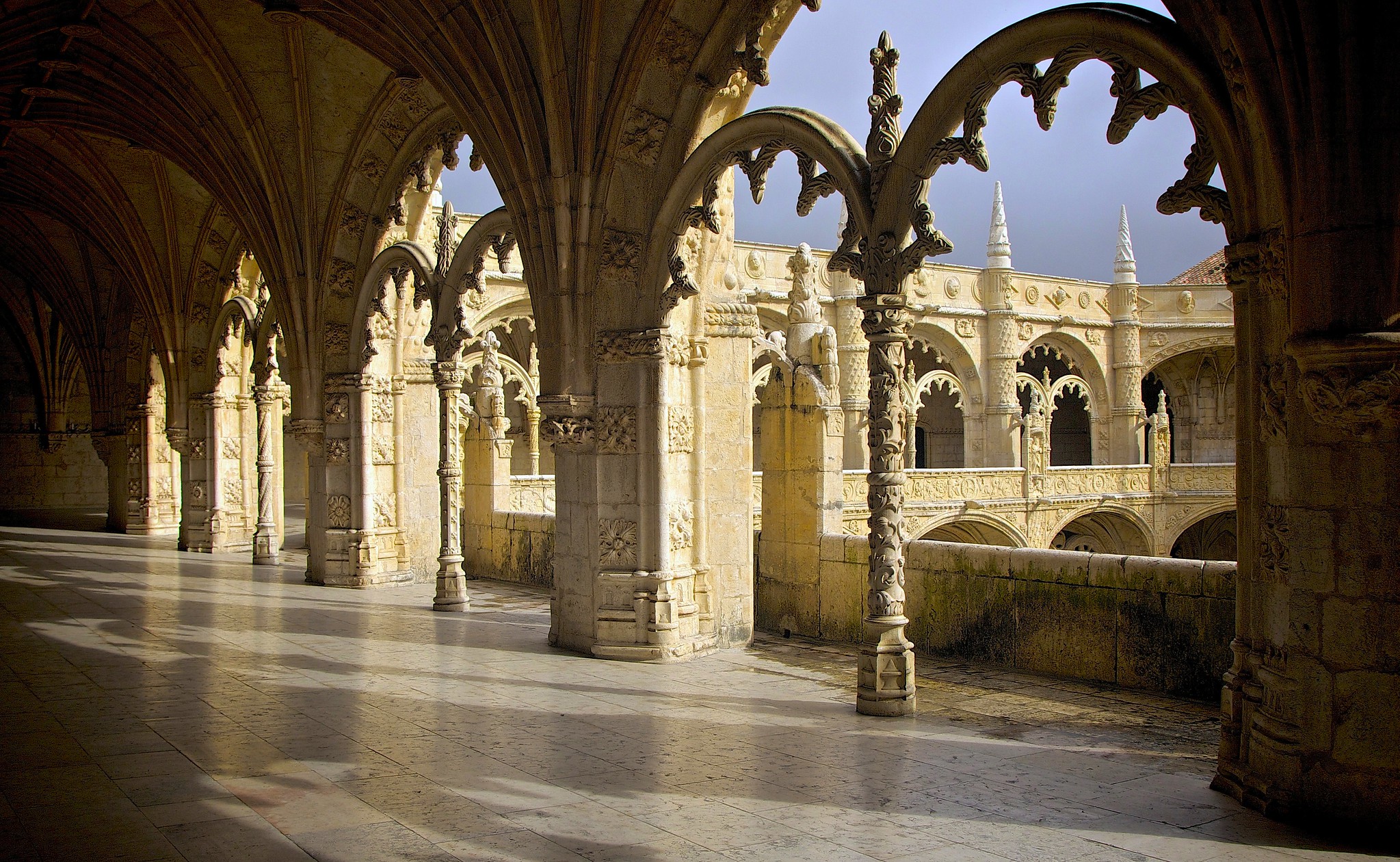Nestled in the charming Belém district of Lisbon, the Jerónimos Monastery stands as a testament to Portugal’s rich history and architectural prowess. This UNESCO World Heritage site is not just a monument; it’s a living narrative of the country’s Golden Age of Discovery. As you plan your visit to Lisbon, this iconic landmark should be at the top of your must-see list.
The monastery’s construction began in 1501 under the orders of King Manuel I, and it took nearly a century to complete. This lengthy building process allowed for the incorporation of various architectural styles, resulting in a unique blend that has come to be known as Manueline architecture. Named after the king himself, this style is characterized by its ornate decorations, maritime motifs, and intricate stonework.
One of the most striking features of the Jerónimos Monastery is its south portal, which serves as the main entrance to the church. This masterpiece of Manueline architecture is adorned with elaborate carvings depicting religious figures, explorers, and fantastical creatures. As you step through the portal, you’re transported into a world of soaring vaulted ceilings and slender columns that seem to defy gravity.
The church’s interior is equally impressive, with its nave supported by six massive columns adorned with intricate carvings. These columns, each measuring 25 meters in height, branch out at the top to form a stunning network of ribbed vaults. The play of light and shadow across these architectural elements creates a sense of awe and wonder that has captivated visitors for centuries.
Adjacent to the church lies the monastery’s two-story cloister, considered one of the most beautiful in the world. The cloister’s delicate arches and ornate stonework showcase the pinnacle of Manueline craftsmanship. Each corner of the cloister features a unique decorative element, from twisted ropes and sea monsters to exotic plants and the armillary sphere, a symbol of Portuguese maritime exploration.
As you wander through the cloister, you’ll notice that no two columns are exactly alike. This attention to detail and variety is a hallmark of Manueline architecture, reflecting the wealth and ambition of Portugal during its Age of Discovery. The upper level of the cloister offers breathtaking views of the surrounding gardens and the Tagus River beyond, providing a glimpse into the monastery’s strategic location.
One of the most fascinating aspects of the Jerónimos Monastery is its ability to blend religious symbolism with maritime themes. This unique combination reflects Portugal’s dual identity as a devoutly Catholic nation and a seafaring power. Throughout the monastery, you’ll find carvings of ships, ropes, and sea creatures alongside traditional religious iconography, creating a visual narrative of Portugal’s history and aspirations.
The monastery also houses the tombs of several important figures in Portuguese history, including Vasco da Gama, the famous explorer who discovered the sea route to India. These ornate tombs, with their intricate carvings and symbolic imagery, serve as a reminder of Portugal’s golden age of exploration and discovery.
As you explore the Jerónimos Monastery, it’s easy to see why it’s considered one of the most impressive examples of Manueline architecture in the world. Its blend of Gothic, Renaissance, and Moorish influences, combined with uniquely Portuguese elements, creates a truly one-of-a-kind architectural experience. Whether you’re admiring the intricate stonework, marveling at the soaring vaults, or simply soaking in the atmosphere of centuries past, the Jerónimos Monastery never fails to leave a lasting impression on all who visit.
The Jerónimos Monastery stands as a masterpiece of Portuguese Late Gothic Manueline architecture, symbolizing the wealth and power of Portugal during the Age of Exploration. Its intricate stone carvings, expansive cloisters, and maritime motifs reflect the nation’s seafaring heritage and religious devotion. As a UNESCO World Heritage site, the monastery continues to be a significant cultural landmark, attracting visitors from around the world and serving as a testament to Portugal’s rich history and artistic achievements. The enduring legacy of Jerónimos Monastery not only showcases the pinnacle of 16th-century craftsmanship but also embodies the spirit of discovery and faith that shaped Portugal’s golden age.

